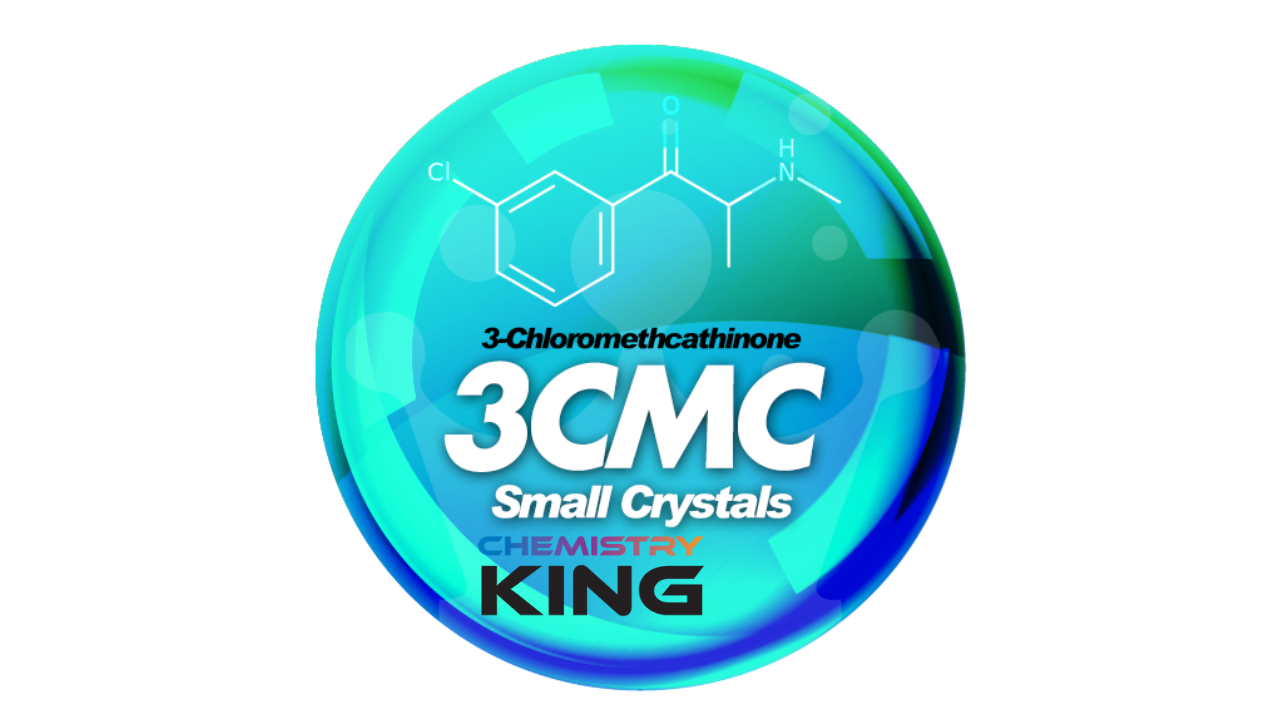Understanding the Risks of 3CMC Overdose: A Guide by Chemistry King
Chemistry King is a trusted online retailer offering high-purity research chemicals for scientists and researchers. Among the wide range of products we provide, 3CMC, or 3-chloromethcathinone, has become a focal point for many research projects. However, like all research chemicals, it carries significant risks if not handled properly. One of the most pressing concerns is the risk of overdose, which can have severe and potentially life-threatening consequences. This article aims to provide a comprehensive understanding of 3CMC overdose, its symptoms, potential treatments, and preventive measures, drawing on Chemistry King’s commitment to safety and education.

What is 3CMC?
3CMC is a synthetic cathinone, part of a larger family of chemicals commonly referred to as “bath salts.” These substances are known for their stimulant effects, similar to those of amphetamines and cocaine. 3CMC, in particular, is used in research settings to study its effects on the brain and behavior, as well as its potential therapeutic applications. Despite its intended use for research, some individuals misuse 3CMC for its psychoactive effects, leading to dangerous situations, including overdose.
Addiction Potential and Health Risks
Recognizing the symptoms of a 3CMC overdose is crucial for timely intervention. Overdose symptoms can vary depending on the dose and individual tolerance levels but generally include:
- Cardiovascular Issues: Increased heart rate (tachycardia), hypertension, and in severe cases, arrhythmias or heart attacks.
- Neurological Symptoms: Agitation, severe anxiety, paranoia, hallucinations, and seizures. In extreme cases, an overdose can lead to coma or death.
- Psychological Effects: Intense euphoria followed by severe anxiety, confusion, and paranoia. Users may also experience violent behavior and psychosis.
- Physical Symptoms: Hyperthermia (elevated body temperature), excessive sweating, dehydration, and muscle breakdown (rhabdomyolysis).

We sell our products exclusively to customers aged 18 and over, strictly for research purposes only.
Mechanism of Overdose
3CMC affects the brain by increasing the levels of neurotransmitters such as dopamine, norepinephrine, and serotonin. These chemicals are responsible for mood regulation, energy levels, and the fight-or-flight response. An overdose occurs when these neurotransmitters are excessively elevated, leading to overstimulation of the central nervous system. This overstimulation can cause the severe cardiovascular, neurological, and psychological symptoms mentioned above.

Treatment for 3CMC Overdose
Immediate medical attention is essential for anyone suspected of overdosing on 3CMC. The treatment focuses on stabilizing the patient and managing symptoms:
- Cardiovascular Support: Monitoring and managing heart rate and blood pressure using medications and intravenous fluids.
- Sedation: Benzodiazepines are often administered to control agitation, anxiety, and seizures.
- Cooling Measures: Hyperthermia is treated with cooling blankets and ice packs to lower body temperature.
- Hydration and Electrolyte Balance: Intravenous fluids help combat dehydration and restore electrolyte balance.
- Monitoring and Support: Continuous monitoring in an intensive care unit (ICU) to manage any complications and provide supportive care.
Preventive Measures
Preventing a 3CMC overdose begins with responsible handling and use, particularly in research settings. Here are some preventive measures:
- Education and Training: Researchers should be well-informed about the risks associated with 3CMC and trained in proper handling and dosage.
- Strict Adherence to Dosage Guidelines: Always follow recommended dosages and avoid experimenting with higher doses.
- Use of Protective Equipment: Personal protective equipment (PPE) should be worn to avoid accidental ingestion or skin contact.
- Secure Storage: Keep 3CMC in a secure, locked environment to prevent unauthorized access and potential misuse.
- Emergency Preparedness: Laboratories and research facilities should have protocols in place for dealing with chemical overdoses, including access to emergency medical services.

While 3CMC offers valuable insights in research contexts, its potential for misuse and overdose cannot be overlooked. Chemistry King is committed to ensuring the safety of researchers by providing high-purity chemicals and comprehensive educational resources. Understanding the symptoms, treatment, and preventive measures associated with 3CMC overdose is crucial for ensuring the safety of researchers and preventing life-threatening situations. By adhering to strict safety guidelines and maintaining a high level of awareness, the risks associated with 3CMC can be significantly minimized, allowing for its continued use in scientific exploration. Trust Chemistry King for reliable and safe research chemical supplies.
FAQ and How We Can Help
Frequently Asked Questions answered here; don’t hesitate to ask more!
Symptoms of a 3CMC overdose include increased heart rate, hypertension, severe anxiety, paranoia, hallucinations, seizures, hyperthermia, excessive sweating, dehydration, and muscle breakdown. Recognizing these symptoms early is crucial for intervention.
Preventive measures include strict adherence to dosage guidelines, proper education and training on handling 3CMC, using personal protective equipment (PPE), securing storage of the chemical, and having emergency protocols in place. Chemistry King provides educational resources to help researchers handle 3CMC safely.
Immediate medical attention is essential. Treatments focus on stabilizing the patient, managing symptoms, providing cardiovascular support, sedation, cooling measures, and hydration. Continuous monitoring in an ICU may be required. Chemistry King’s resources include guidance on emergency preparedness.
Yes, when used responsibly and with proper safety measures, 3CMC can be a valuable tool in research. Chemistry King provides the necessary resources and high-quality chemicals to ensure researchers can safely conduct their studies.


